Pre Move-In
Post Move In
Homeowner Responsibilities
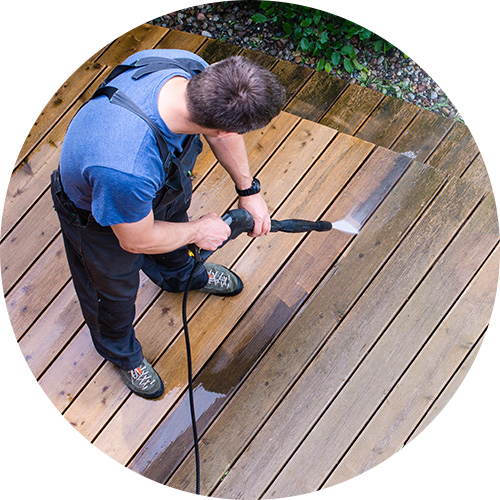 Homeowner Responsibilities
Homeowner Responsibilities
Protecting your investment
Follow these best practices to keep your new home in tiptop shape and protect your new home's warranty. Take control of condensation, understand proper seasonal maintenance, prevent heat and water damage, and care for interior features and finishes.
Your participation in the warranty process is key
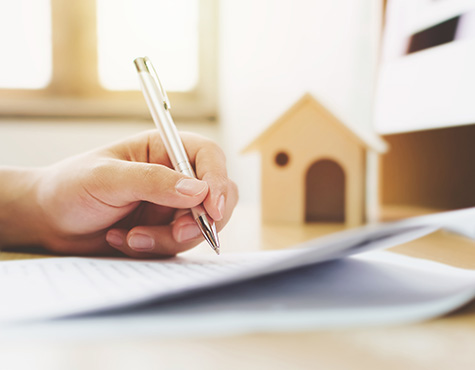
Completing your warranty forms
One of the first things you can do to protect your new home and its warranty is to follow the process laid out by Tarion by registering at MyHome at www.tarion.com. Your first obligation is to submit a list of items you may have noticed from living in your home between 25 and 30 days after your date of possession. Please also send a copy to the Minto Warranty Team so we can schedule a work day. You will follow the same process again on your first and second year anniversaries.

Being available for scheduled repair days
Buying a new home is a significant financial investment but we also recognize the significant investment it is in terms of time. Minto will work with you to schedule repair work days as conveniently as possible. We will coordinate to have as many Trades and workers in on the same day, to minimize the amount of time we are in your home. We do ask that you, or a trusted friend or family member, be home for these repairs, so that you can confirm they are completed to your satisfaction.
Learn More About
Critical Home Care Tips
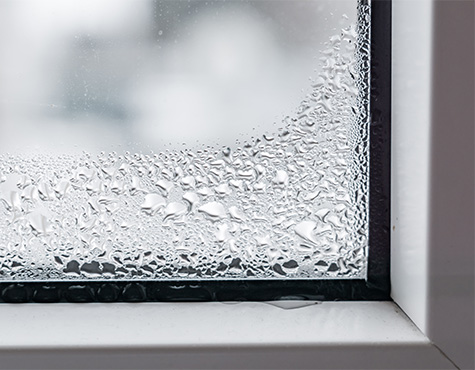
Humidity control and ventilation
One of the most important things you can do to protect your home and its warranty is maintain proper humidity control for the current outside temperature. This is even more critical in a modern, new home that is built to Minto’s and the new building code’s air-tight and energy efficiency standards. Purchasing a couple of hygrometers and taking readings in various areas of your home can help you effectively monitor and adjust humidity.
Protecting your finishes and furniture
Maintaining the relative humidity in your home has many benefits, not only to your overall comfort, but proper humidity control can also extend the life of any wood products inside the home, such as furniture, cabinetry, and flooring. It is highly recommended, particularly during the winter months, that indoor relative humidity is monitored and that efforts are made to control the humidity levels by ventilating well; either by opening windows, using your range hood exhaust, investing in a dehumidifier, running bathroom fans and/or HRV. As a general guideline, it is recommended that relative humidity level of 35% be maintained; however, on extremely cold days, which are common in the Ontario winter months, the number should be lowered. Some wood products and hardwoods require slightly higher or lower humidity levels, as recommended by their manufacturer. Please contact the Minto Warranty Team for more advice.
Adjust your humidity according to the weather
Condensation and high humidity are a common cause of deficiencies in a new home and if the root cause of a deficiency is determined to be improper humidity, the item is not covered by your new home warranty. In the winter months as the exterior temperature drops and central heating is turned on in homes, moisture in the air condenses on cold surfaces such as windows and doors. Water droplets form on these surfaces and run down, which if left unchecked, can cause damage to window frames, drywall, flooring and interior trim. Damage resulting from condensation is also not covered by the home warranty, and if ignored can lead to fungal growth on wet surfaces. Water damage from condensation is unsightly, but in most cases, it can be easily repaired as long as any standing water is cleaned up and the surface is allowed to properly dry out.
| Outside Air Temperature | Ideal Relative Humidity (%) | |
|---|---|---|
| Celsius (°C) | Fahrenheit (°F) | At an indoor temperature of 21°C (70 °F) |
| -24 | -10 | 25% |
| -18 | 0 | 30% |
| -12 | 10 | 35% |
| -7 | 20 | 40% |
| 0 | 32 | 45% |
Be sure to also read our article on how to get a handle on humidity too.
Smoke/Carbon Monoxide Detectors
A minimum of one electric smoke detector has been installed on each floor of your home, including the basement, as well as one in each bedroom as required. Your home will either include combination smoke and carbon monoxide combination units or have a separate carbon monoxide detector. All your smoke detectors are directly wired to your electrical system so that they always have power, and include an integrated power back-up in the event of a power outage. The smoke detectors in your home are connected so when one of them trips, all of them will sound.
Critical Homeowner Maintenance
It is important to properly maintenance your home’s smoke and carbon monoxide detectors so that in the case of a fire or a CO leak, your household is warned. Detectors should be cleaned at least once every month using the soft brush or wand attachment of a vacuum cleaner or a damp cloth to remove dust build up from the vent. It is highly recommended that you clean and test each smoke detector once a month to ensure they are working properly.
Chirping or False Alarms
Your smoke detector is designed to start “chirping” or giving off short beeps if any facet of the system or sensor is disrupted. Evolving technology has made these units very sensitive, therefore any anomaly whatsoever will lead to either the ‘chirping’ or a false alarm, which will trip all your home’s detectors. If this occurs, it usually means the unit needs to be cleaned, the power backup is wearing out, the sensor has been damaged or come to the end of its life. Depending on how long the unit was on the shelf after shipping, the unit’s exposure to light, if the unit was shaken or hit, how often there have been power outages, etc. this could occur at any time in the smoke detector’s life.
If you experience a false alarm, you can reset each unit or if the problem persists, choose to temporarily disconnect the malfunctioning smoke detector and contact the manufacturer to see if you are eligible for a replacement. To remove, twist the detector to remove it from its base, and disconnect the wire. You can test each unit to determine which one is malfunctioning. Please see our video on how to reset, test and disconnect your smoke/carbon monoxide detector.
Outside Your Home

Watering your new lawn
Watering of new sod just after its installation is critical for your new grass to survive. In the absence of adequate rain, water new grass daily to promote root development. The optimum time for watering is early morning. To ensure that you are watering enough, lift a corner of the new sod. If the soil underneath is not soaking wet, more watering is required. After two to three weeks, the grass should be well established and should then only require watering depending on the amount of rainfall. If the sod begins to turn reddish brown, more frequent watering is needed.
Maintaining your grading and rainwater run-off
The grading or shape of your land on your lot provides positive drainage away from your home and into the storm sewer system. The grading must be maintained to prevent drainage issues on your lot, and the lots of your neighbours. Lot drainage systems such as swales, (shallow ditches) and catch basins are designed to direct water away from the home. Remove leaves and other debris from the catch basin covers in the spring and fall, as well as snow and ice in the early spring. This will ensure proper drainage.
Your property has been graded for proper drainage during a normal rainfall. Heavy or prolonged rains may result in some standing water pooling in depressions or on the road adjacent to the curb when the soil is saturated, for up to 48 hours.
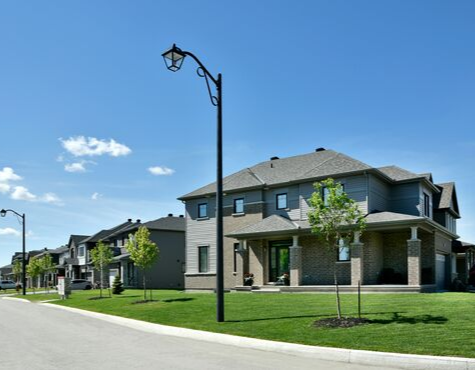
Winterizing your water pipes
Exterior hose bibs and faucets need to be properly drained each year before the winter season to prevent freezing pipes. Winterize your pipes every fall, before frost occurs, as burst hose pipes or damage to exterior faucets are not covered under the new home warranty. Please contact the Warranty Team if you are not sure how to winterize your exterior faucets.
Preventing Damage To Your Home
Preventing water damage
Water damage is one factor of home care many homeowners don’t think about until it’s too late. It’s important to learn the signs of a potential water problem in your home so you can avoid costly repairs.
- Never ignore a drip or drop. You should immediately attempt to find and stop leaks before they cause any damage.
- Do not leave standing water or wet cloths on a countertop, particularly on joints or near the junction of the countertop and back splash as this can cause water damage including swelling of the subsurface of the countertop.
- Wipe up spills on hardwood flooring before they are absorbed into the wood or become sticky.
- Remove spills from carpeting immediately to prevent spots and stains. If stains occur do not rub the carpet surface while attempting to remove them. Stains should be blotted out with cotton cloths or paper towels.
Preventing heat damage
Homes are filled with large and small appliances that make life easier, however, heat from these appliances can cause damage to homes:
- Take care when using heat-producing appliances (such as a toaster) below cabinets in order to minimize the possibility of damaging the cabinets due to excessive heat.
- Read the operating manual before operating a new stove or cooktop. Gas stoves have been known to damage laminate cupboards. Electric or gas range cooktops or appliance burners should not be operated without being covered with a pot or pan. Equally important, the doors of a stove or wall oven should not be left open for extended periods of time.
- Hot pans or activated electrical appliances should not be placed under wall cabinets or directly on laminated surfaces - use protective insulating pads.
To do list: Seasonal Maintenance
Taking care of your new home is an on-going process. Seasonal maintenance is essential to protect your investment and ensure you can enjoy your home for years to come. Keep this checklist handy and take care to address the following tips. Unsure how to handle it? Feel free to reach out to Warranty for advice.
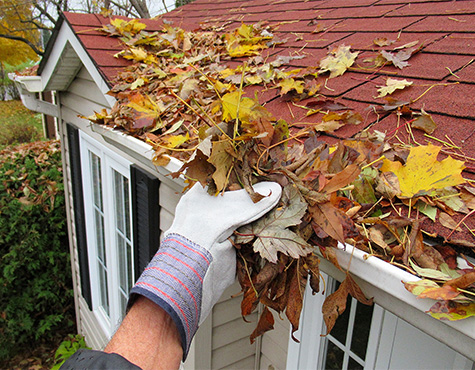
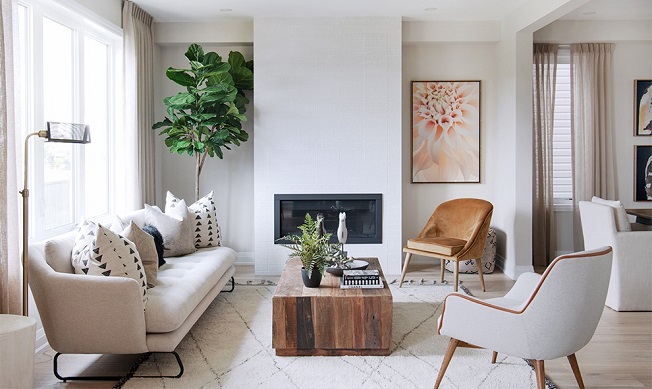
We're here to help
Just Tell us How

Your Customer Experience Coordinator can provide any answers or connect you with the right person to address any questions - during regular business hours.









